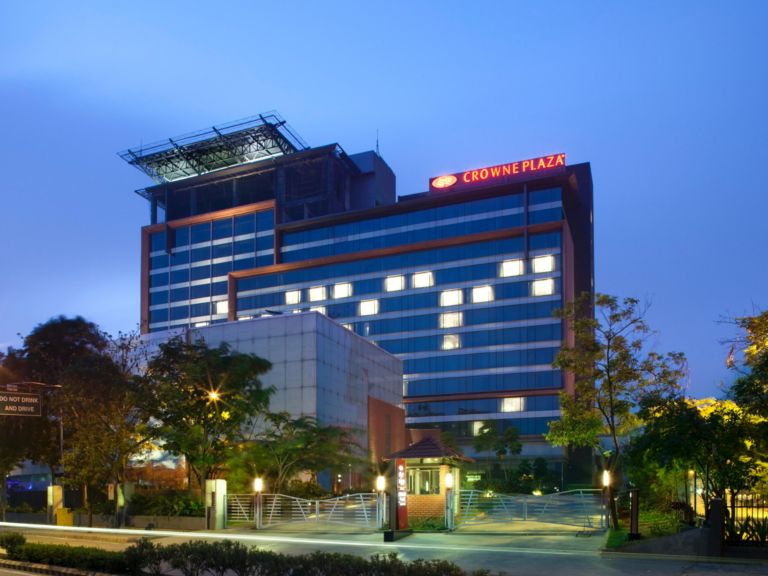Venue and Travel Information
Welcome to Bangalore, India Host city to the Pre conference workshop- IEEE CCEM 2018
Venue: Crowne Plaza Bengaluru Electronics City,43, Hosur Road, Electronics City Phase 1, Electronic City
Bengaluru, Karnataka 560100,Phone: 080 3003 0303
Website : Crowne Plaza,Electronics City,Bengaluru
Location
About Bangalore
Bangalore is unique in many ways. It has the most pleasant weather throughout the year which got itself the name "Pensioner's Paradise". It is the only cosmopolitan and multilingual city in the country which has welcomed everyone who wanted to make Bangalore their home and this speaks of the hospitable nature of the Bangaloreans. Bangalore which was only a city known within India a couple of decades ago has now found its place in the World Map because of the export of software and software professionals to the entire world. Bangalore is now on everybody's tour itinerary while visiting India.
Bangalore city is now the nerve centre of industrial activity in the state with the presence of several Public Sector Undertakings. The Electronic City in Bommasandra and the Software Technology Park, called the IT Park, which has come up on the outskirts of the city, has earned the reputation of being the "Silicon" Valley of India. Many multinational and Indian companies are represented here. Ranked among the 10 fastest growing cities in the world, Bangalore has many on-going and proposed projects in the industrial and Information Technology sectors. The city has slowly found a place in the country's history and off recently a place on the world map. Today Bangalore is India's fifth largest and the fastest growing city in Asia.
History
The earliest records of a place named 'Bengaluru' are found in a 9th century temple in an area that is now known as 'Old Bangalore'.
Legend has it that the feudal lord Kempe Gowda was once hunting in this area, a rabbit turned and attacked his dog. This made a great impression on Gowda and he gave the place a title of gandu bhoomi (the place of heroes) and in 1537, with the assistance of the local king, he constructed three districts protected by a walled fort on the site.
During the next three centuries, Bengaluru existed very much in the shadow of its neighboring city Mysore, and control of the town changed hands many times. The year 1831 marked a major turning point for the city. Claiming misrule by the king Krishna Raja Wodeyar III, the British took control of the Mysore Kingdom and, possibly influenced by the city's salubrious climate, moved the administrative capital to Bengaluru. New telecommunication systems were laid, rail connections built, fine government buildings constructed, and the city's famous parks and gardens established. After independence, Bengaluru maintained its position as the Karnataka state capital, and continues to flourish.
For many years, Bengaluru was known throughout India as the most green, liberal and forward-thinking city. In recent years, these attributes have propelled Bengaluru to the forefront of the high-tech industry boom in India, and it currently ranks as India's most developed city and one of the world's fastest growing urban areas.
The name Bangalore appears to come from an Anglicisation of the native name "Bengaluru" - an adaptation of the earlier name in Kannada: Benda Kaalu Uru (The Town of Boiled Beans). Apparently this rather humble name was bequeathed to the city by King Vira Ballala. Once while lost in the area, he was offered boiled beans by an old woman, and it was out of gratitude that he named the area after this simple offering.

